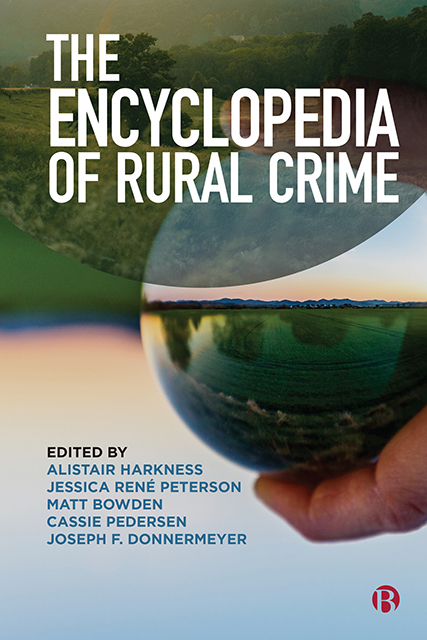Book contents
78 - Youth and Youth Sub-cultures
Published online by Cambridge University Press: 20 June 2023
Summary
The development of criminological theory has been grounded on urban centres with urban youth as the focus. From Walter Miller’s explanation of the focal concerns to the Chicago School’s development of social disorganization theory, criminological theories have focused almost solely on urban youth and urban centres. The lack of theoretical explanations for crime in rural areas has hampered our understanding of crime and deviant behaviour (see Donnermeyer, 2007).
Rural areas are distinct from urban areas. Research has demonstrated that drug use, gun availability and poverty differ in rural and urban centres. Moreover, some crimes are unique to rural areas, such as livestock theft. Scholars have also pointed out that rural areas are often seen as homogenous by criminologists. However, rural areas display a wide variety of characteristics, such as poverty level, racial composition and unemployment. Therefore, there is a need for the development of criminological theory based on rural areas.
One of the areas of interest may be the examination of youth sub-cultures within rural areas. Rural areas are often believed to be devoid of gangs or any type of sub-culture that may produce crime (see Weisheit and Wells, 2001). Criminologists have argued that any gang activity in rural areas was due to migration from urban areas. For example, families may move from an urban area and bring their gang affiliations and activity to the rural area. Another line of reasoning is that rural youth may copy the gang symbols and activities they see youth in urban areas using. Yet some scholars have argued that migration and copying do not explain the activity found in rural areas. Research has shown that most gang members in rural areas are homegrown.
Rural areas have a unique culture. Research has demonstrated that gang activity in rural areas does not mimic that of urban areas (see Dukes and Stein, 2003; Howell and Egley, 2005). Urban gang activity may not have the same appeal to youth in rural areas. Instead, rural youth may create their own sub-culture and gangs based on their unique experience. For example, drug use is a problem in urban and rural communities.
- Type
- Chapter
- Information
- The Encyclopedia of Rural Crime , pp. 308 - 310Publisher: Bristol University PressPrint publication year: 2022

